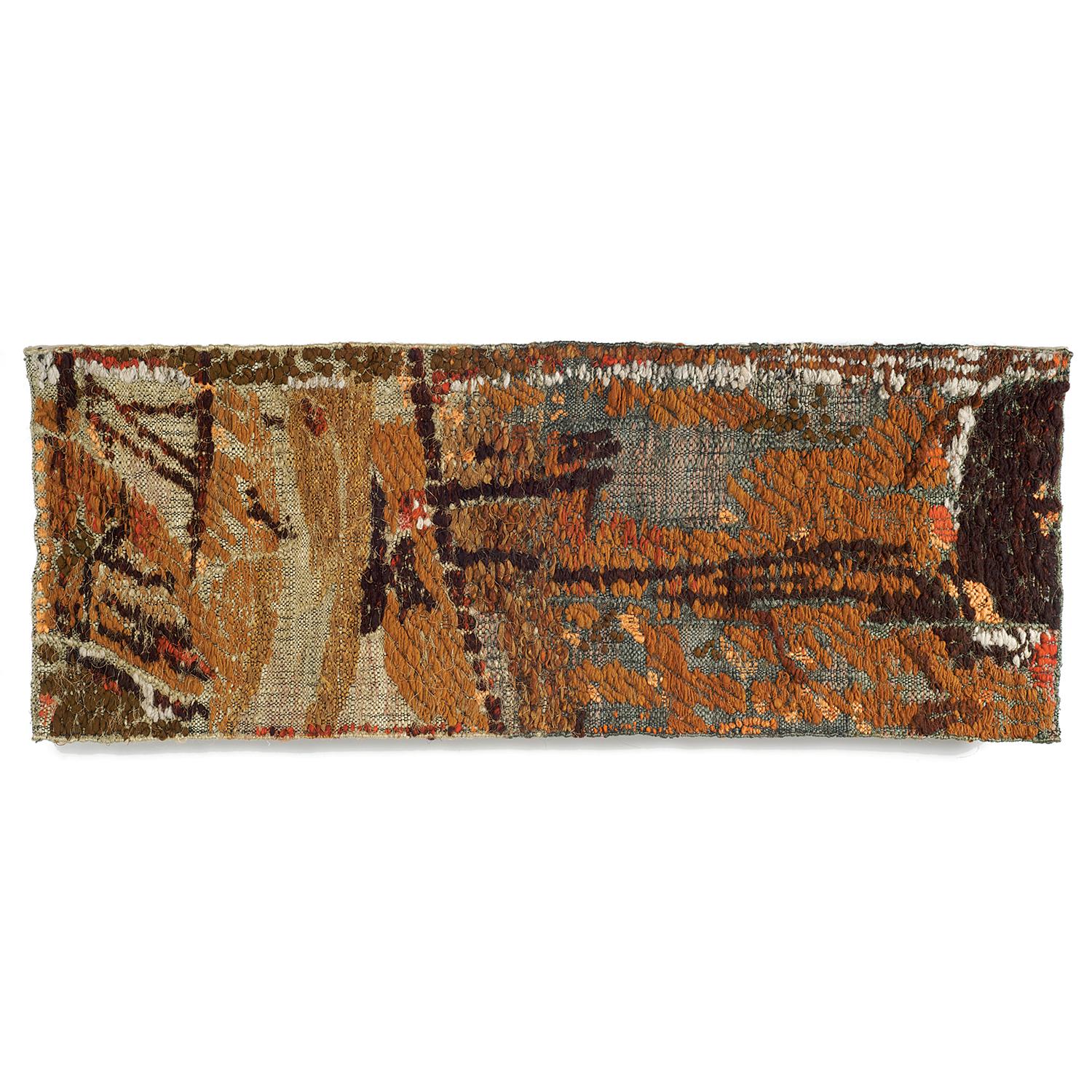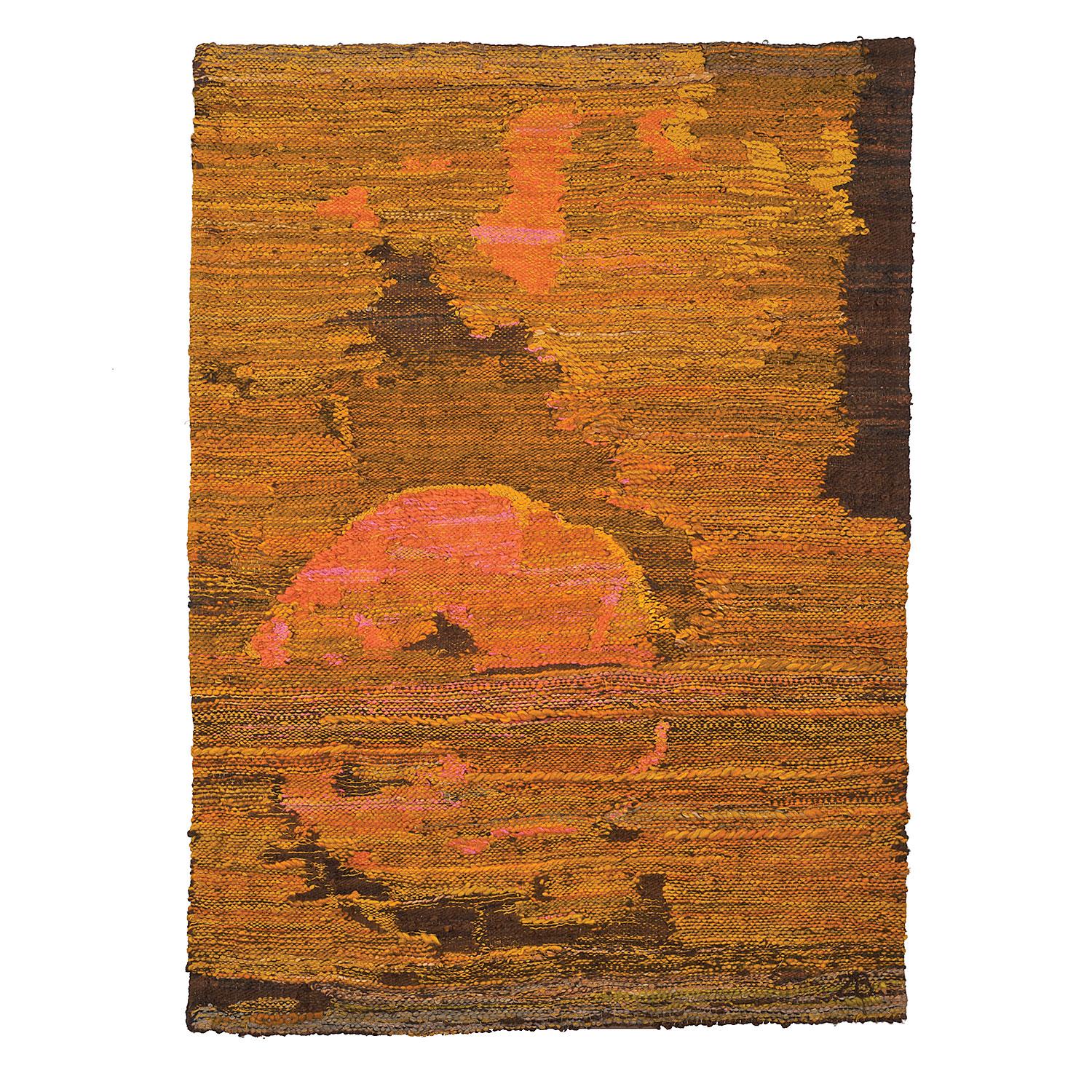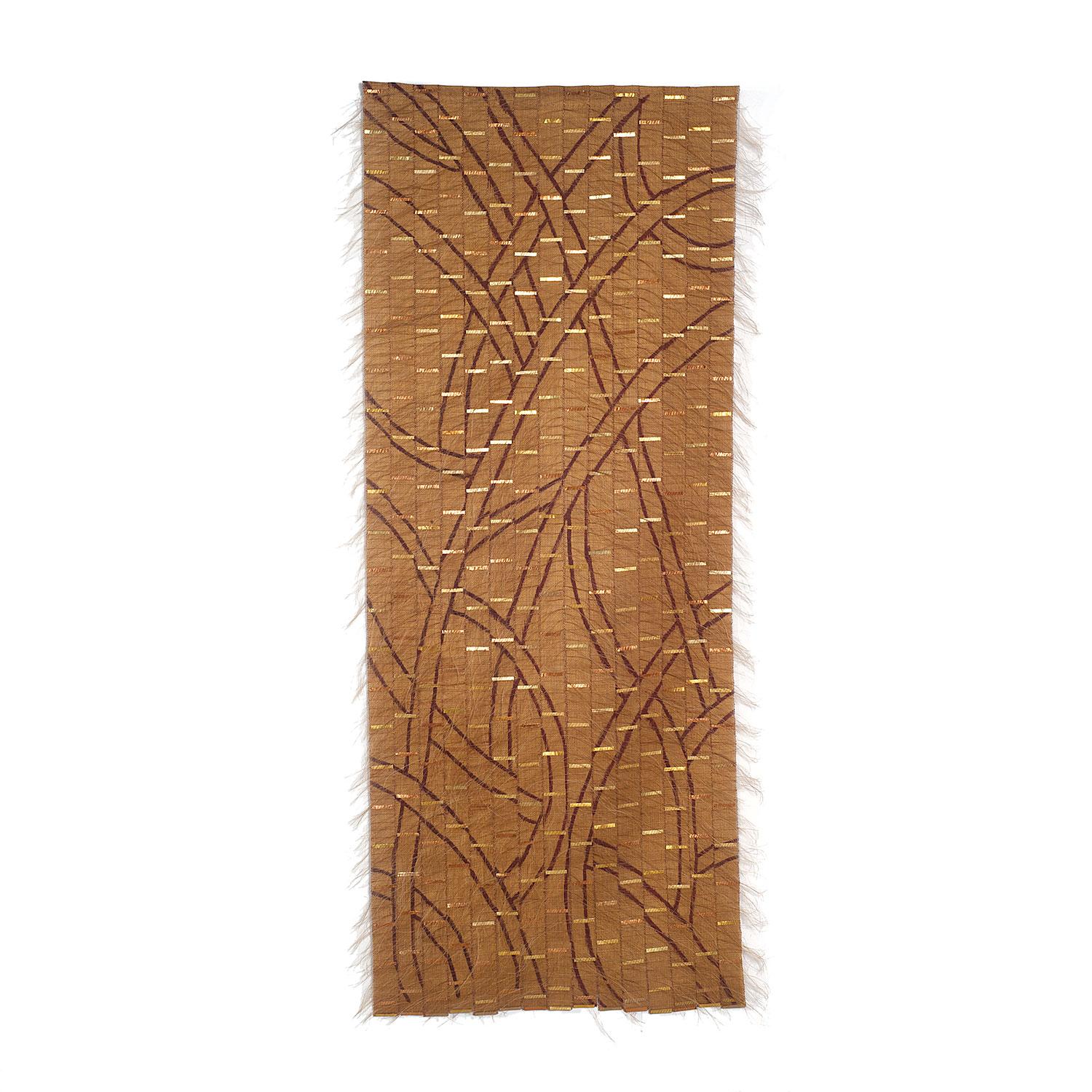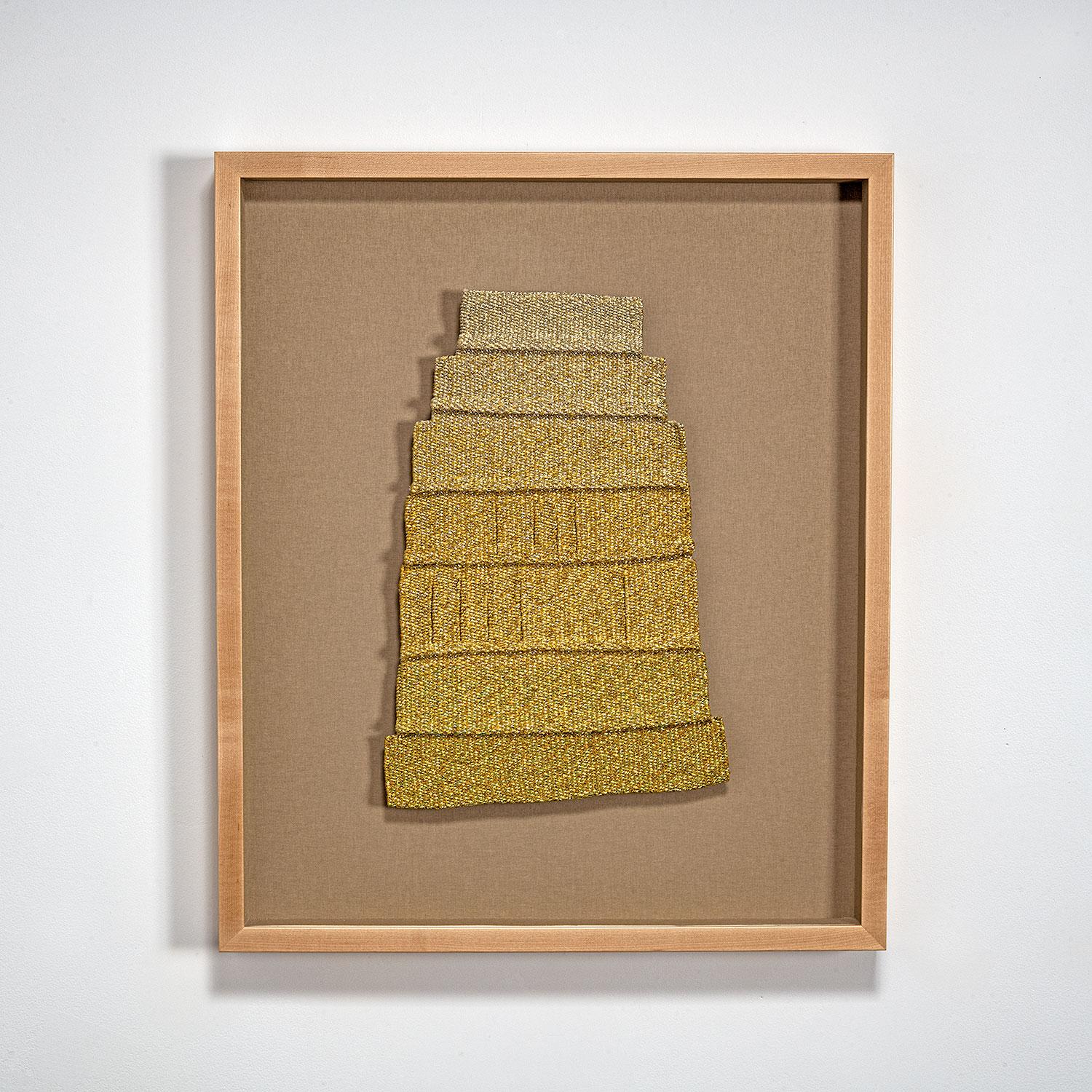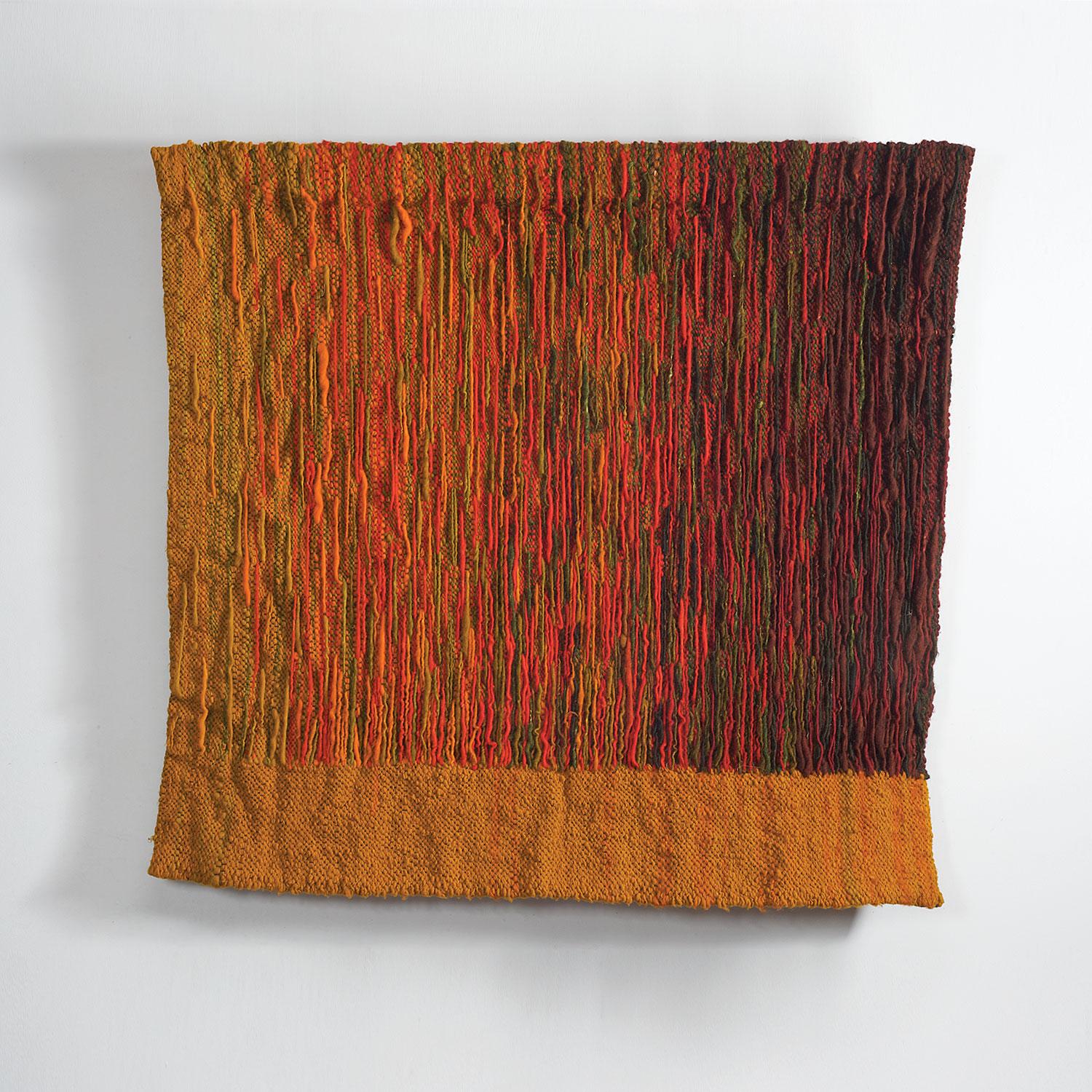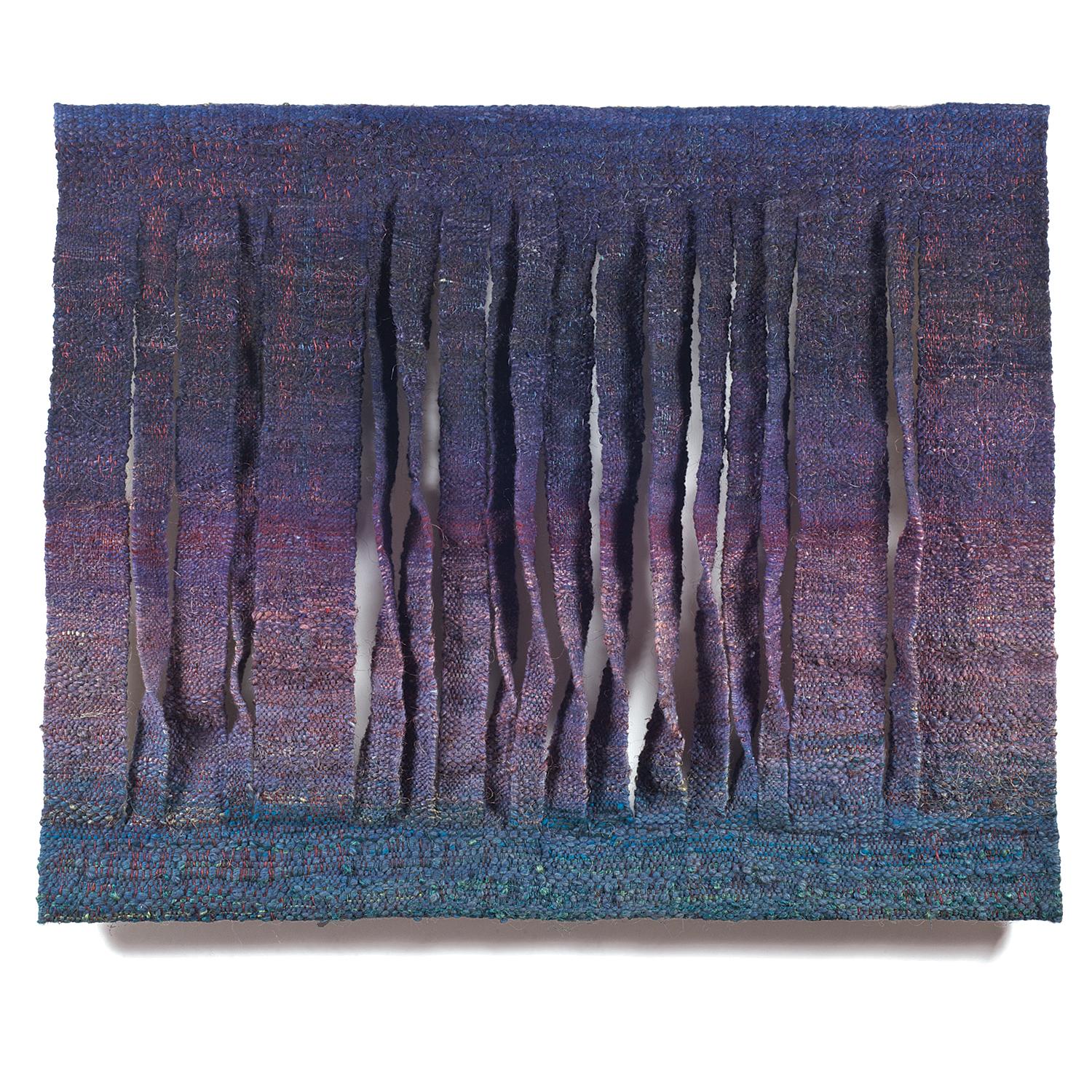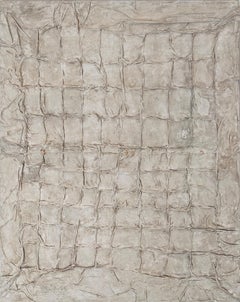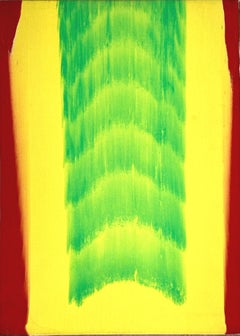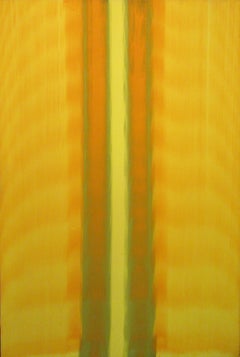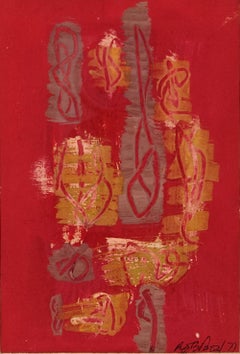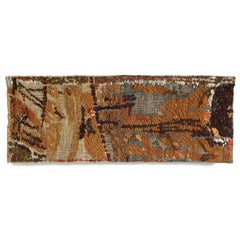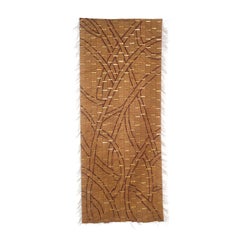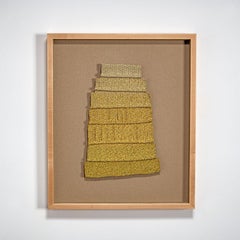Items Similar to "Tapisseries du Vent" Sheila Hicks, 1973 Gold Weaving, Textile Tapestry
Want more images or videos?
Request additional images or videos from the seller
1 of 8
Sheila Hicks"Tapisseries du Vent" Sheila Hicks, 1973 Gold Weaving, Textile Tapestry1973
1973
$150,000
£114,585.22
€131,646.86
CA$214,467.75
A$236,293.51
CHF 122,319.83
MX$2,845,035
NOK 1,548,864.90
SEK 1,455,060.60
DKK 982,994.40
About the Item
Sheila Hicks
Tapisseries du Vent, 1973
Signed on the reverse
Synthetic raffia weaving with Lucite rods
56" high x 34ʺ wide x 6ʺ deep
Sheila Hicks was born in Hastings, Nebraska, and graduated from Yale University with a BFA and an MFA. She won a Fulbright fellowship in 1957-58 to paint in Chile. While in South America she acquired her passion in dealing with textiles. She currently splits her time between her Paris studio and New York, having established workshops in Mexico, Chile, and South Africa, as well as working in Morocco and India.
Hicks has exhibited globally in both solo and group shows. She was included in the 2017 Venice Biennale, 2014 Whitney Biennial in New York, the 2012 São Paulo Biennial in Brazil. Recent solo exhibitions include "Pêcher dans La Rivière" at the Alison Jacques Gallery in London (2013), "Lignes de Vie" at the Centre Pompidou in Paris in 2018, Free Threads 1954-2017 Museo Amparo, Mexico Hicks, Sheila: 50 Years made its debut at the Addison Gallery of American Art before visiting the Mint Museum in Charlotte, North Carolina, and the Institute of Contemporary Art in Philadelphia.
The Metropolitan Museum of Art and the Museum of Modern Art in New York City, the Museum of Fine Arts Boston, the Art Institute of Chicago, the Victoria & Albert Museum in London, the Stedelijk Museum in Amsterdam, the Centre Pompidou in Paris, the Museum of Modern Art in Tokyo, the Museo de Bellas Artes in Santiago, and solo exhibitions at the Seoul Art Center in Korea and the Israel Museum in Jerusalem all own pieces of Hicks' art.
About the Seller
5.0
Platinum Seller
Premium sellers with a 4.7+ rating and 24-hour response times
Established in 2022
1stDibs seller since 2022
123 sales on 1stDibs
Typical response time: <1 hour
- ShippingRetrieving quote...Shipping from: New York, NY
- Return Policy
Authenticity Guarantee
In the unlikely event there’s an issue with an item’s authenticity, contact us within 1 year for a full refund. DetailsMoney-Back Guarantee
If your item is not as described, is damaged in transit, or does not arrive, contact us within 7 days for a full refund. Details24-Hour Cancellation
You have a 24-hour grace period in which to reconsider your purchase, with no questions asked.Vetted Professional Sellers
Our world-class sellers must adhere to strict standards for service and quality, maintaining the integrity of our listings.Price-Match Guarantee
If you find that a seller listed the same item for a lower price elsewhere, we’ll match it.Trusted Global Delivery
Our best-in-class carrier network provides specialized shipping options worldwide, including custom delivery.More From This Seller
View All"Knickfaltung (Folded)" Herbert Zangs, Modernist, Folded Fabric, Textural Work
By Herbert Zangs
Located in New York, NY
Herbert Zangs
Knickfaltung (Folded), 1955
Signed and dated lower left
Cotton cloth folded and painted with dispersion
42 x 32 inches
Provenance
Private Collection, Krefeld, Germany
...
Category
1950s Abstract Mixed Media
Materials
Cotton, Paint
"Untitled" Gene Hedge, Abstract Color Field, Yellow Pattern Midcentury Painting
Located in New York, NY
Gene Hedge
Untitled, circa 1970
Acrylic on canvas
29 x 20 3/4 inches
(P097)
Gene Hedge was born (1928) and raised in rural Indiana. After military service, he briefly attended Ball State University in Muncie, Indiana. There he encountered the writing of Laszlo Moholy-Nagy, and the following year (1949) went to study at the Institute of Design in Chicago. He received a B.S. degree in Visual Design from the Institute of Design (1953), and he also took courses at the Art Institute of Chicago and began working in collage.
During this period, the influence of Eugene Dana...
Category
1970s Abstract Abstract Paintings
Materials
Canvas, Acrylic
"Untitled" Gene Hedge, Abstract Color Field, Yellow Midcentury Painting
Located in New York, NY
Gene Hedge
Untitled, circa 1966
Acrylic on canvas
61 1/2 x 42 1/8 inches
(P122)
Gene Hedge was born (1928) and raised in rural Indiana. After military service, he briefly attended Ball State University in Muncie, Indiana. There he encountered the writing of Laszlo Moholy-Nagy, and the following year (1949) went to study at the Institute of Design in Chicago. He received a B.S. degree in Visual Design from the Institute of Design (1953), and he also took courses at the Art Institute of Chicago and began working in collage.
During this period, the influence of Eugene Dana...
Category
1960s Abstract Abstract Paintings
Materials
Canvas, Acrylic
"Untitled" Betty Parsons, 1977, Female Mid-century Abstract Expressionist
By Betty Parsons
Located in New York, NY
Betty Parsons
Untitled, 1977
Signed and dated lower right
Gouache on paper
5 1/2 x 3 3/4 inches
Renowned as an esteemed and legendary art dealer who for more than three decades was...
Category
1970s Abstract Abstract Drawings and Watercolors
Materials
Paper, Gouache
"Notes I" Calvert Coggeshall, Abstract Expressionism Hard-edge Vertical Stripes
Located in New York, NY
Calvert Coggeshall
Notes I, 1970-80
Signed, titled, and dated on the reverse
Acrylic on canvas
65 x 67 inches
Calvert Coggeshall worked as an abstr...
Category
1970s Abstract Expressionist Abstract Paintings
Materials
Canvas, Acrylic
"Halloween" Blanche Lazzell, Batik Abstract Textile Composition, Cloth Dyeing
By Blanche Lazzell
Located in New York, NY
Blanche Lazzell
Halloween, circa 1920-22
Batik
15 1/2 x 9 inches
Provenance:
The artist
James & Janet Reed (gifted from the above)
John Cuthbert, Morgantown, West Virginia
Born ne...
Category
1920s Abstract Mixed Media
Materials
Textile, Dye
You May Also Like
Stony Signs, Mid-Century Modern Abstract Woven Tapestry, Textile Wall Sculpture
By Jolanta Owidzka
Located in Wilton, CT
Stony Signs, wool, sisal, copper, 35" x 90", 1978.
This Mid-Century Modern abstract woven tapestry was done by Postwar and Contemporary Polish textile...
Category
Mid-20th Century Modern Abstract Sculptures
Materials
Metal, Copper
Sandstorm, Post-Modern Abstract Landscape Woven Tapestry, Textile Sculpture
Located in Wilton, CT
Sandstorm (1985) Wool, Post-Modern Abstract Landscape Woven Tapestry, Textile Sculpture.
Zofia Butrymowicz (1904-1987) was born in Warsaw, Poland.
St...
Category
1980s Abstract Abstract Sculptures
Materials
Fabric, Textile, Tapestry, Wool
Landscape Transformed, Contemporary Abstract Tapestry, Textile Wall Sculpture
By Adela Akers
Located in Wilton, CT
Adela Akers (b. 1933, Santiago de Compostela, Spain) is a Spanish-born textile and fiber artist. She is Professor Emeritus (1972 to 1995) at the Tyler Scho...
Category
2010s Abstract Abstract Sculptures
Materials
Metal, Foil
Gold Laugh, Post-Modern Metallic Woven Abstract Textile Sculpture/Embroidery
By Micheline Beauchemin
Located in Wilton, CT
Gold Laugh (1980-85) metallic and acrylic thread, cotton. Gold, Metallic Woven Abstract Textile Sculpture.
Textile artist, Micheline Beauchemin (1929-2009) was born in Longqueuil, Quebec, Canada. She has created a repertory of various works which includes theatre curtains, tapestries, wall hangings, embroidery murals, flexible walls, stained glass works, scale models, collages, toys, costumes and illustrations. Micheline Beauchemin began her career making stained-glass windows but early on turned to weaving and embroidering spectacular wall hangings in vibrant colors, including blues and greens. travelled and studied in Japan, China, India, North Africa, the Canadian Arctic and the Andes, adding depth and mystery to the love of light, water, wings and nets that is evident in her body of work.
Beauchemin’s works are included in the collections of the National Gallery of Canada, Ottawa; the Montreal Museum of Fine Arts; the Musée du Québec; Pearson Airport, Toronto; the Canada Council, Ottawa; the Canadian Museum of Civilization, Gatineau; the Bibliothèque Centrale, Quebec; the Taxation Data Centre, Shawinigan; the Revenue Building, Québec; North York...
Category
1980s Post-Modern Abstract Sculptures
Materials
Metal
Refleksy (Reflexes), Mid-Century Wool Tapestry, Abstract Textile Wall Sculpture
Located in Wilton, CT
Refleksy (Reflexes), flax (linen) and wool, 50" x 48" x 2", 1973.
This warm, vivid Mid-Century tapestry, Refleksy (1973) is by Polish textile artist, ...
Category
Mid-20th Century Abstract Abstract Sculptures
Materials
Fabric, Textile, Tapestry, Wool, Linen, Thread
Palisades, Contemporary Abstract Textile Wall Sculpture, Woven Tapestry
Located in Wilton, CT
Palisades, wool and sisal, 55" x 70", 1992. Contemporary Abstract Textile Wall Sculpture, Woven Tapestry.
Anna Urbanowicz-Krowacka (b 1938, Poland) gra...
Category
1990s Abstract Abstract Sculptures
Materials
Fabric, Textile, Tapestry, Wool, Thread
More Ways To Browse
Textile Art Weaving
Sheila Hick
Quinda Verheul
Randy Stromsoe
Remington 8 Typewriter
Rob Zweerman
Robert Bode
Roni Horn Sculpture
Ruby Palmer
Safety Pin Sculpture
Salvador Dali Crucifixion
Schumann Regine
Sienna Martz
Simone Pheulpin
Somers Randolph
Spectacular Meteorite Specimen
Stephanie Wheeler Pottery
Stephen Cox
